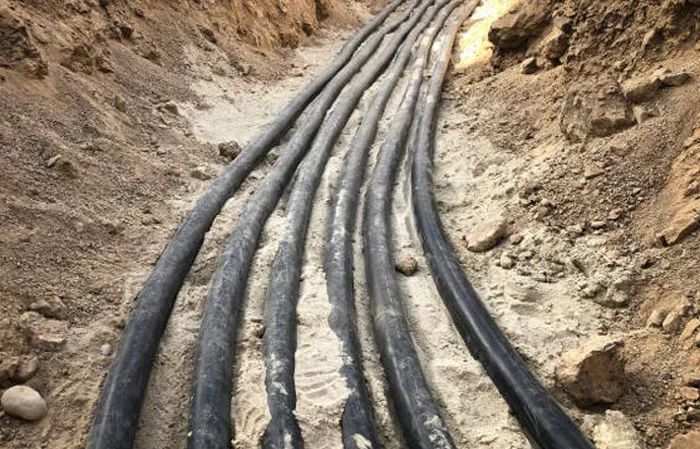
Underground cable laying is a common method of electrical power transmission and distribution. It involves installing cables underground, typically in trenches, instead of overhead on poles. Underground cable laying offers several advantages over overhead cable installations, including increased safety, aesthetic appeal, and lower susceptibility to environmental factors. Here are some important considerations for underground cable laying:
Design the Cable Route – Before starting the installation process, it is essential to plan the cable route carefully. The cable route should avoid any obstacles that can damage the cables, such as sharp edges, rocks, or roots. The route should also avoid areas with high groundwater or flooding potential.
Choose the Right Cable – Selecting the right cable is crucial for ensuring the proper functioning of the system. The cable should be suitable for the intended application, and it should meet the required specifications and standards. Factors to consider include the type of voltage, the distance of transmission, the operating temperature, and the level of protection against environmental factors.
Trenching and Excavation – Trenching and excavation are the most critical aspects of underground cable laying. The trench should be dug to the correct depth and width, and it should be wide enough to allow for the installation of the cable and any associated equipment, such as splices and terminations. The trench should also be free from any debris or sharp objects that can damage the cable.
Cable Installation – The cable should be installed in the trench using proper techniques, such as the use of cable rollers or guides to prevent damage to the cable. The cable should also be buried to the correct depth and covered with backfill material, such as sand or gravel, to provide proper support and protection.
Termination and Splicing – Once the cable is installed, it is essential to terminate and splice the cable ends properly. This includes stripping the cable insulation, connecting the conductors to the connectors, and protecting the connections using insulation and heat-shrink tubing. Proper splicing and termination are crucial for ensuring the long-term reliability and safety of the installation.
Testing – After the installation is complete, the cables should be tested to ensure that they are functioning correctly. Testing includes verifying the continuity of the cable, measuring the insulation resistance, and checking for any shorts or open circuits.
In conclusion, underground cable laying is a complex process that requires careful planning, design, and execution. By following the above steps, the cables can be installed safely and efficiently, ensuring the proper functioning of the electrical power transmission and distribution system. It is also essential to adhere to the relevant safety and regulatory standards to ensure that the installation meets all necessary requirements.

We are Government approved Electrical Licensed Contractor in India.
Copyright © 2023 BS ELECTRICALS
Design by – Surat Web Solution